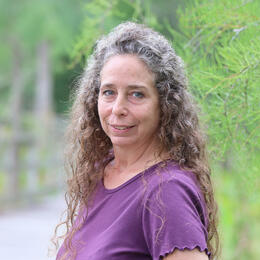It was mid-afternoon on Monday, just past closing time for visitors, when Sally Stein, Director of Public Programs, rolled a kayak along the boardwalk to the Lettuce Lakes. Recreational kayaking is not allowed at Corkscrew Swamp Sanctuary, but this kayak was launched with a different purpose: managing a non-native snail that has been overtaking the waterways across Florida for decades.
Over the past week, Stein had noticed that bright pink clumps of eggs, laid by non-native apple snails, were appearing above the water line on vegetation and cypress tree trunks. A few visitors noticed them too and asked questions at the desk about the strange pink things attached to plants along the boardwalk.
Limpkins and Snail Kites are two species that rely on Florida’s native apple snails, Pomacea paludosa, for their primary food. But an influx of a variety of nonnative snails to Florida’s waterways through the aquarium trade has presented a challenge for the birds due to their large size. All of these snails eat vegetation, and land managers are concerned that the sheer number of the non-native variety can pose challenges to the native vegetation in Florida’s aquatic ecosystems, and possibly even displace the native Florida apple snail.
Stein paddled across the lake toward the first few clusters and popped them into a plastic bag. By physically removing the egg clusters, she is helping to reduce their numbers. After a little more than an hour, Stein’s catch this week was 21 egg clusters, removing about 2,000 eggs! She got nine clusters from North Lake, seven from South Lake, and five from the pond along the shortcut trail.
Invasive species management costs Florida millions of dollars a year through removal programs and other impacts.
“Non-native apple snails are all over the Everglades,” says Paul Gray, Ph.D., Everglades Science Coordinator for Audubon Florida. “Native snails tend to eat the algae sheath off the outside of plants, but the non-natives eat the plant, itself. With this eating habit and their explosive reproductive rate, the non-natives can denude wetlands of entire plant communities,” he added.
At Corkscrew Swamp Sanctuary, the removal of non-native plants and animals is an ongoing process. To learn more about Audubon Florida's efforts in the war on invasives, please visit the Florida Invasive Species Task Force page.






